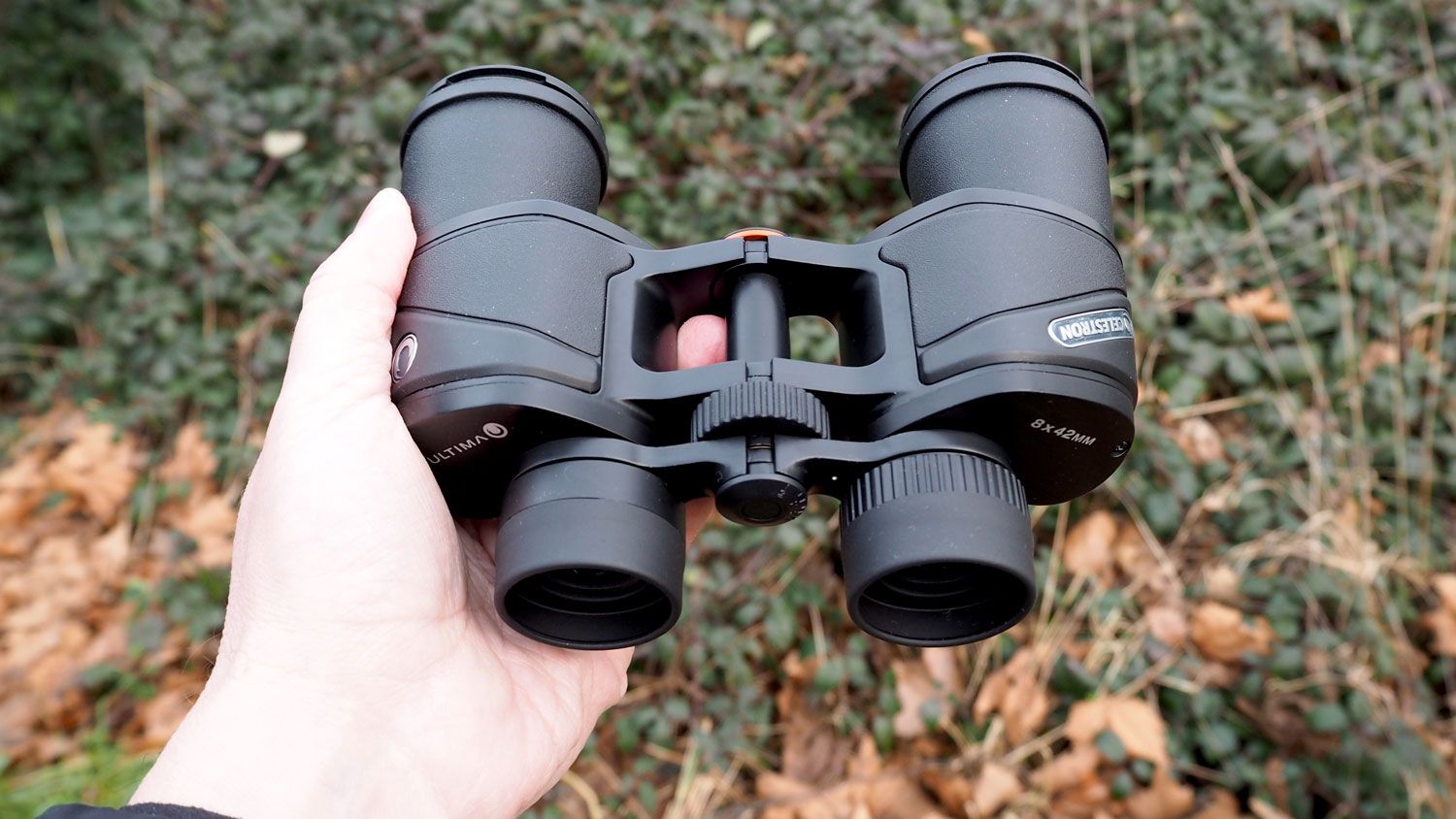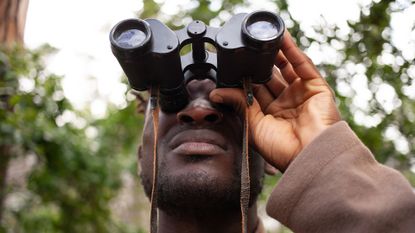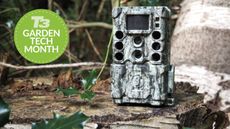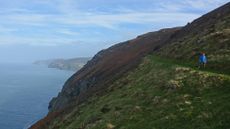If you're all up in the air, fluttering around and trying to figure out the best binoculars for birdwatching, relax – you've landed on the right page. Due to the very fact that birds don't spend a lot of time on the ground and are skittish by their very nature, the best birdwatching binoculars require a measured and balanced combination of several elements.
That's why we've put together this guide specifically for twitchers – for more general-use options, head to your best binoculars or best monoculars guides. If not, read our pick of the best birdwatching binoculars around right now, followed by some top tips on what to look for when buying your first (or next) birdwatching binoculars.
Best binoculars for birdwatching to buy right now
Why you can trust T3 Our expert reviewers spend hours testing and comparing products and services so you can choose the best for you. Find out more about how we test.


The Bushnell Engage EDX 8x42 are premium-build binoculars that marry an 8x magnification to a respectably large 42mm objective lens. In return for a not-inconsiderable investment, they'll deliver a premium performance, razor-sharp views and a wide angle of view makes following our feathered friends’ flights that much easier.
The quality of view is in part due to the class leading ED prime glass used in their construction – the 'ED' in the EDX in the model name – combined with a 'EXO' water- and oil-repellent lens coating. The multi-coated optics also help maximise brightness and clarity, while the rubberised outer armour prevents slippage when hand holding. For convenience and comfort, a folding mechanism allows adjustment of the eyepieces' inter-pupillary distance to match your own, while a tactile central focusing wheel with just the right amount of 'give' for speedy and accurate adjustment is to be found between the eyepieces. The roof prism design further ensures the Bushnell Engage EDX 8x42 remain compact and portable enough to slip in a jacket pocket, even if the 'beastly' 666g weight can get a little wearing with prolonged handholding.
While we did notice instances of purple fringing in high-contrast viewing scenarios, such as where the dark branches of trees meet a featureless sky, in all other respects this is a solidly made, solid performing pair of birdwatching binoculars, with a wide angle of view making it easier to keep birds and other wildlife in sight at all times. Head to our full Bushnell Engage EDX 8x42 binoculars review for more info.


Anyone seeking classic porro prism construction binos for a broader range of observational tasks, and which offer value for money with it, should check out the Celestron Ultima 8x42 binoculars. These capably weld an 8x magnification to a large and bright 42mm objective lens. For short-range birdwatching and general viewing it more than fits the bill. While it might be slightly broader in dimensions than an alternatively compact roof prism bino, this particular Celestron offering does feature a central folding mechanism in order to adjust inter pupillary distance, with the knock-on effect that they can be squeezed into a roomier jacket pocket for day-to-day use.
Some users will also admire the fact that this vintage type of bino construction provides a greater – almost 3D-like – depth of image, and decent image quality for a comparably lower price than their sleeker roof prism brethren to boot. A synthetic rubber exterior provides a non-slip grip when using in the wet and the wild, where likewise waterproofing and nitrogen purged tubes to prevent fogging come in very handy. If you're on a budget when birding, these will certainly help your personal flights of fancy take wing. Head to our full Celestron Ultima 8x42 binocular review for more info.


The Nikon Prostaff 3S 8x42 are rugged binos that offer plenty of observational bang for your buck. These crystal clear, compact binos are available in a choice of 8x or 10x magnification to bring the faraway that much closer, wedded to a 42mm diameter objective lens. Users are further gifted a highly reflective silver alloy coating to the internal prism lenses, resulting in a brighter view overall. Though Nikon is well known for its optical excellence, further good news is that the asking price is such that you won't have to empty your account to afford ownership.
Rubber armoured and feeling robust in the hand, this option is O-ring sealed to prevent moisture ingress and nitrogen filled to avoid the lenses fogging up when out and about. At just 565g in weight they'll avoid wrist ache, while a long eye relief enables increased comfort in use, particularly for those wearing glasses while observing. Whether you're watching birds in the backyard or hiking on the hillside, with a decent overall spec offered by Nikon at an equally decent price, this quality option should provide years of loyal service and many hours of happy observation of your feathered friends. Check out our full Nikon Prostaff 3S binoculars review to see more of what we thought.


Perhaps the hardest thing about using the best binoculars for birdwatching is having them hanging around your neck all day. If that's something you'd rather avoid, the Vortex Crossfire HD 10x50 binoculars are well worth checking out thanks to their included GlassPak, a unique chest case/harness that takes the weight off your neck, protects your binos and makes them nice and quick to deploy when you need them, making them ideal for birdwatching.
The GlassPak isn't perfect – it gets in a tangle when it's not in use, and its bag is permanently attached to the harness, which is annoying – but the binoculars themselves come pretty damn close for the price. They're tough with a refined feel, and the image quality you'll get out of them (thanks to their high density, extra low dispersion glass) is seriously impressive and super sharp. Add to that an unlimited lifetime warranty and you have a fine set of birdwatching binos; find out more in our Vortex Crossfire HD 10x50 binoculars review.


Compact, versatile and portable, the Celestron Trailseeker 8x42 mid-range priced, roof prism type binos aren't just suitable for birding, but are adept for a range of common pursuits, including, due to their size, travel. The 8x magnification and 42mm objective lens here work in finely balanced harmony, with the rock-solid magnesium alloy body construction ensuring years of observational use ahead of you, as well as making the binos easier to hold steady when observing your avian quarry.
Premium BaK-4 glass used in the construction here ensures more light gets through which results in greater viewing clarity, and thanks to a standard tripod adapter thread on the bridge between the lenses it is possible to mount this device on a tripod for prolonged periods of viewing. Ultimately image quality is what it's all about and in this regard these bins deliver consistently crisp and colourful results, with our only gripe being the provided lens caps occasionally slipped off in our Celestron Trailseeker ED 8x42 binoculars review period. Overall though, this is another solid binocular choice for birders… and beyond!


If getting a big, bright and sharp image is your priority when you're looking for the best binoculars for birdwatching, Nikon's Action EX 12x50 are strong contenders. With large 50mm objective lenses and 12x magnification they provide killer views in all conditions and at a very reasonable price; however the trade-off for this performance is weight. Coming in at a whole kilogram, these binos are big and heavy, and if you're not blessed with rippling biceps you'll probably want to use them with a tripod (and an L-shaped adapter).
Bear in mind that the closest can focus with these binoculars is 7m, which shouldn't be an issue if you're birdwatching. They're tough and waterproof as well as fog-proof, and if you can live with their bulk you'll find a lot to love about them. Get all the heavyweight facts in our Nikon Action EX 12x50 binoculars review.


For birders on a budget, the Celestron Nature DX 8x42 binoculars are a great choice. These deliver a lot of plus points for their very reasonable price point, including an excellent focus knob that makes it easy to quickly fine-tune your focus onto avine targets. In our Celestron Nature DX 8x42 binoculars review, our tester noted that these delivered reliably bright, sharp and colourful views in their birdwatching excursions, with only mild blurring around the edges of the image. They're smaller and lighter than most 8x42 binos, which makes them easier to tote to your birdwatching spot.. although we were less than impressed with the quality of the neck strap.


Another big and bulky pair of Nikon binoculars, the 10x50 Aculon A211 are porro prism binos that are decent all-rounders, and while they're not quite as hefty as the Nikon Action EX 12x50 binoculars further up the page, they're still pretty heavyweight. They're also wider than most other binoculars, but despite all that we really rather like them: they're affordable and tough mid-rangers, and they feel like they'll last you a very long time.
Just like the Action EX 12x50 you'll want to pair these Nikons with a tripod and L-shaped adapter for extended use, but they're worth the effort, delivering bright, sharp and colourful images across the board. With a 7m minimum focus they're unlikely to be useful for watching birds in your back garden, but they're ideal for taking out and about for spotting more exotic varieties. Learn all about them in our Nikon 10x50 Aculon A211 binoculars review.


For a value-added price the Celestron UpClose G2 10x50 binoculars deliver. Intended more as an everyday pair of bins than for use by twitchers specifically, these certainly nevertheless possess sufficient power and poke for the price, if you don't mind the traditional wider binocular build and operation. With surprisingly clear results delivered by this specialist brand as well as a value for money price point, the construction uses basic Bk7 glass prisms and the barrels and bridge are made from aluminium. You do get a rubber coated exterior to aid grip, yet the eyecups aren't adjustable and feel a tad flimsy to the touch.
However, for the money, the performance is impressive, with a wide field of view enabling you to comfortably take in your surroundings, which is what its target audience will be chiefly concerned about. While not the consistently sharpest or best-built binos out there, as is consistently the case with this brand, the level of performance for the almost pocket money price feels just about right. Find out more in our Celestron UpClose G2 10x50 binoculars review.


To get up close and personal views of birds, particularly the smaller varieties, is tricky; ideally you want a powerful magnification, plus a large and bright objective lens. But as noted in our intro, this often means physically larger and heavier binoculars, or a wobblier view at maximum magnification. One solution is, as with the Canon 10x42L IS WP binoculars here, to offer built-in image stabilisation, resulting in steadier viewing of further away subjects. This requires 2xAAA batteries to power the anti-shake unit and makes these binoculars slightly larger than a non-image stabilised pair, but those who are hand holding binoculars for longer periods when birdwatching may well consider it a trade-off worth making.
Canon seems to have cornered the market for IS binos, and has several options available of which this one has the advantage of – ironically perhaps – featuring a thread for tripod mount, should your arms get tired. On top of all this the binoculars are commendably waterproofed and feature ultra-low dispersion lens elements to correct any chromatic aberration that can cause purple fringing in high contrast situations. In summation, with this device Canon's optical excellence and anti-shake technology combine in a rock-solid binocular that will make birding a breeze, as long as your budget stretches to the premium price being asked for such a combo. Head to our Canon 10x42L IS WP binoculars review to find out more.
How to choose the best birdwatching binoculars for you
While the temptation is to go for a powerful magnification in order to pull your feathered friends closer for observation, the counter argument is that high magnification binos are harder to handhold and achieve a judder-free image with. That is, unless you're paying a premium for a pair of binoculars with built-in image stabilisation of course – such as the Canon 10x42L IS WP binoculars included – or there's a screw thread or optional adapter available to enable you to mount your binoculars on a tripod, should you happen to have one out with you.
Alongside a decent magnification, you also want to look for a sufficiently sized objective lens; the larger the lens, the greater the amount of light floods in, meaning the brighter the viewing image. So, binoculars with larger objective lens are ideal for viewing birds in low light at the end of the day, or for maintaining clarity on overcast days.
Bear in mind though that larger lenses often mean heavier and bulkier constructed binos with it. So, once again, it's about arriving at that ideal balance to avoid you 'getting the beak'; something that we believe the binoculars showcased here have got right. Without further ado then, let's swan dive into what we consider the best binoculars for birdwatching…
FAQ
Are porro prism or compact roof prism binoculars better for birdwatching?
Binoculars can be split into two categories: the more old-fashioned porro prism binoculars with angular lens tubes, and more modern roof prism binoculars with straight tubes and a streamlined light path.
While the latter is typically the more popular type of binocular, both have their pros and cons. The main draw of the roof prism style is that the inner workings mean they're typically more compact and portable – which is useful if you want to be able to tuck them into your pocket on a birdwatching expedition.
While roof prism binoculars are typically bulkier, they do tend to deliver a brighter image and greater depth of image, which can also be a bonus for short-range birdwatching as well as more general viewing activities. They're also typically cheaper than their more modern equivalents.











